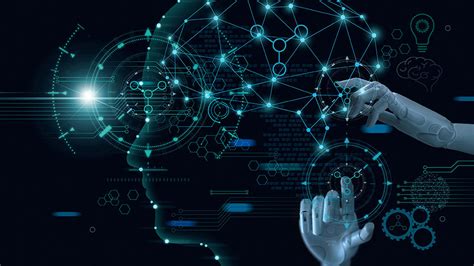Artificial Intelligence (AI) is not just a buzzword anymore; it is transforming every industry and aspect of our lives at an unprecedented pace. From healthcare to finance, education to transportation, AI is making significant strides in solving complex problems and creating new opportunities.

The Impact of AI on Society
According to the World Economic Forum, AI has the potential to create over 70 million new jobs globally by 2025, while also leading to the displacement of others. It is crucial to prepare for the changing job landscape by promoting lifelong learning and enhancing skills.
How AI is Shaping Industries
Healthcare:
– AI-powered diagnostics and personalized medicine are improving patient outcomes and reducing costs.
– Virtual health assistants provide remote care and support to patients, enhancing accessibility.
Finance:
– Machine learning algorithms predict market trends, detect fraud, and streamline risk management.
– AI-based chatbot assist with account management and provide financial advice.
Education:
– AI-enabled adaptive learning platforms personalize education to the needs of each student.
– Virtual tutoring and online simulations enhance educational experiences.
Transportation:
– Autonomous vehicles promise safer, more efficient, and eco-friendly transportation.
– AI-powered traffic management systems reduce congestion and improve commute times.
Innovating with AI
To harness the full potential of AI, we need to foster creativity and encourage new applications. The term “IdeaSyn” encapsulates a process for brainstorming and generating novel ideas using AI.
Applications of IdeaSyn
Healthcare:
– Developing AI-powered prosthetics that can mimic human movements and respond to sensory feedback.
Finance:
– Creating AI algorithms that can predict financial crises and provide early warning systems.
Education:
– Designing AI-based virtual classrooms that replicate the interactive experience of a traditional classroom setting.
Transportation:
– Inventing AI-enabled smart cars that can self-diagnose and predict maintenance needs.
How to Integrate AI
Step-by-Step Approach:
- Identify the Problem: Define the specific challenge or opportunity that AI can address.
- Gather Data: Collect and prepare relevant data to train and deploy the AI model.
- Choose the Right Algorithm: Select an algorithm that aligns with the problem and data available.
- Train and Test the Model: Iterate on training the model and evaluate its performance using relevant metrics.
- Deploy and Monitor: Implement the AI solution and monitor its impact to ensure ongoing effectiveness.
Tips and Tricks
- Start Small: Begin with pilot projects to test AI applications before scaling up.
- Focus on Value: Ensure that AI solutions provide tangible benefits and address real-world problems.
- Collaborate with Experts: Engage with AI specialists, data scientists, and domain experts for optimal results.
Common Mistakes to Avoid
- Overestimating Capabilities: Avoid assuming that AI can solve all problems; it is not a silver bullet.
- Neglecting Ethics: Consider the ethical implications of AI applications and address privacy and bias concerns.
- Underinvestment in Infrastructure: Ensure adequate infrastructure (e.g., computing power, data storage) to support AI initiatives.
Table 1: AI Market Statistics
| Year | Global AI Market Size (USD) |
|---|---|
| 2020 | $39.9 Billion |
| 2022 | $62.3 Billion |
| 2026 | Projected to reach $422.4 Billion |
Table 2: AI Adoption by Industry
| Industry | AI Adoption Rate (%) |
|---|---|
| Healthcare | 48% |
| Finance | 43% |
| Manufacturing | 38% |
| Education | 35% |
| Retail | 32% |
Table 3: AI Impact on Employment
| Sector | Projected Net Job Creation by 2025 |
|---|---|
| Healthcare | +3.5 Million |
| Education | +1.2 Million |
| Transportation | +0.8 Million |
| Retail | +0.7 Million |
| Finance | +0.5 Million |
Table 4: AI Skills in Demand
| Skill | Job Openings (2022-2027) |
|---|---|
| Machine Learning Engineer | 250,000 |
| Data Scientist | 200,000 |
| Software Engineer (AI) | 150,000 |
| AI Architect | 100,000 |
| Business Intelligence Analyst (AI) | 80,000 |
Conclusion
AI is not just a technological advancement; it is a transformative force that is reshaping our world. By embracing AI’s potential, we can unlock new heights of progress, address pressing challenges, and build a better future for all. Let us continue to innovate, collaborate, and responsibly leverage AI to create a world where technology empowers humanity.
